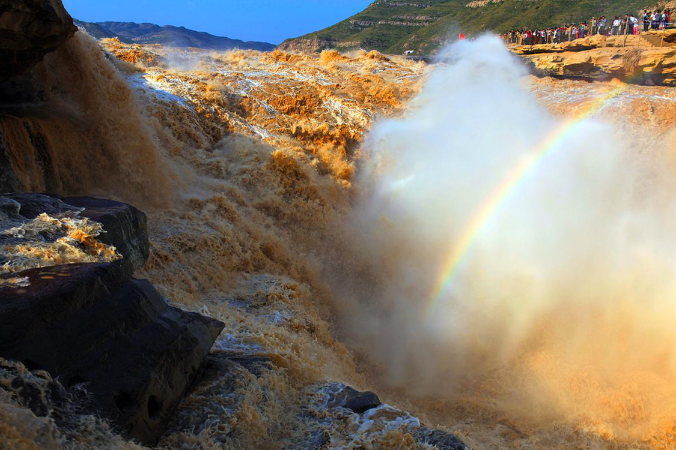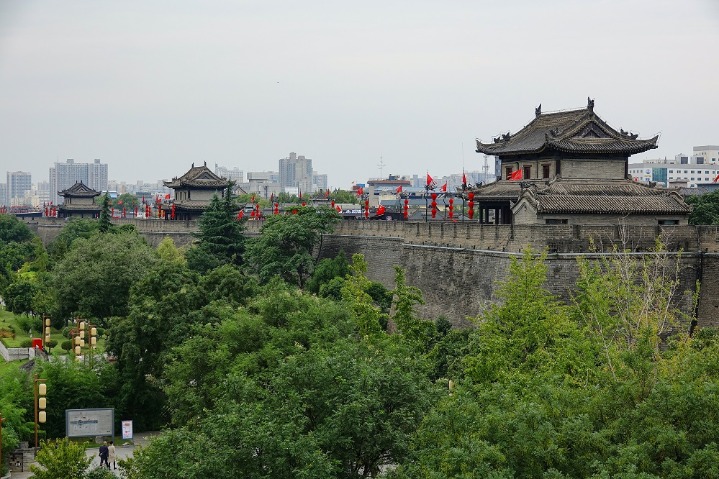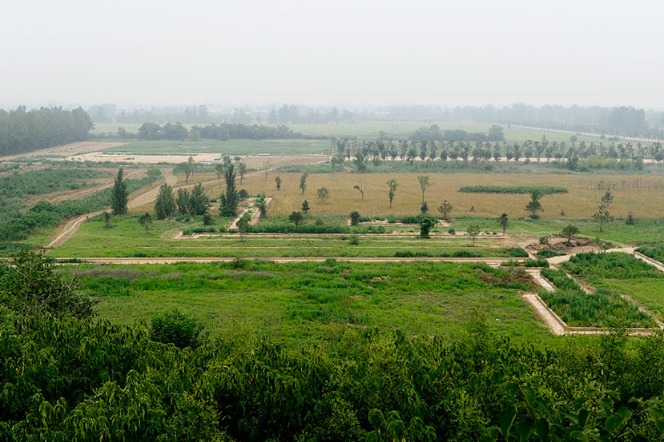
Hukou Waterfall Tourist Area of the Yellow River, Shanxi and Shaanxi provinces
The Hukou Waterfall is a golden waterfall with mobile and subsurface streams. It is formed by the Yellow River running through the Yichuan section of the Qinjin Valley between Shanxi and Shaanxi provinces. The turbulent water stream pours down to the valley and makes for spectacular cascades.

Xi’an City Wall and Beilin Museum Historical and Cultural Scenic Area
The best-preserved ancient city wall boasting the longest history for walls in the world, the Xi’an City Wall is 13.74 kilometers total length and composed of a series of military installations. Completed in 1944 and initially called the Shaanxi Provincial Museum, the Xi’an Beilin Museum was renamed in 1992 and designated a national top-level museum in 2008.

Weiyang Palace in Chang'an City of the Western Han Dynasty National Archaeological Site Park
The site of Weiyang Palace in Chang'an City is the site of the imperial palace complex of the Western Han Dynasty (206 BC-AD 24), and is located in the northwest suburb of Xi'an city, Shaanxi province.

Huashan Mountain, Weinan
Huashan Mountain, one of the Five Great Mountains in China, is located in Huayin city, Weinan city, Northwest China's Shaanxi province.

Famen Temple Buddhist Cultural Area, Baoji
Regarded as a Buddhist holy land for Buddhists worldwide, Famen Temple integrates Chinese culture into its style giving us a window into China's long history of civilization.

Taibai Mountain, Baoji
Located in Meixian county, Baoji city, Northwest China's Shaanxi province, Taibai Mountain National Forest Park covers an area of 2,949 hectares with a forest coverage rate of 94.3 percent.

Jinsi Grand Canyon, Shangluo
Jinsi Grand Canyon lies southeast of Shangnan county, Shangluo city, Northwest China's Shaanxi province.

Mausoleum of Yellow Emperor, Yan’an
The Yellow Emperor Mausoleum, located in Huangling county, Yan’an city, Shaanxi province, is in memory of Huangdi, or the Yellow Emperor.



